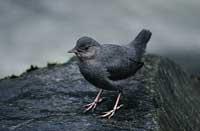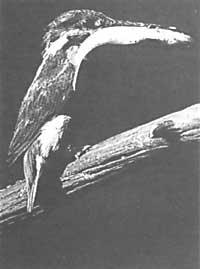Blue ray
1997/01/01 Elosegi Irurtia, Migel M. Iturria: Elhuyar aldizkaria
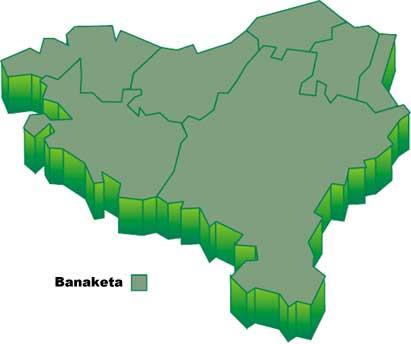
“Txiiiit”!! Listen to the noise of transportation and discover that a blue shadow passes through the river has been all one. However, until we have lost ourselves in the curve, we have been able to verify that it was a rare bird that flew very quickly, very close to the surface of the water, and that it was very straight. A little later, we have found it again in a willow branch and for a few minutes has stood looking at the water. However, with the binoculars looking at their bright clothes, the time has become very short. All of a sudden, like a lightning has been thrown upside down to the water and has surprised us when a little fish has come out grabbed to the beak.
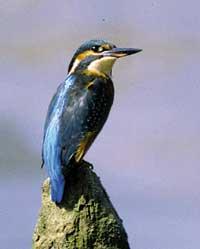
Like the birds of bright and vivid colors in the tropical zone are abundant and own, they are scarce in latitudes. Kingfisher ("Alcedo atthis") is one of these few fascinating plumage and, of course, a member of a tropical family. This unique bird, classified in the family Alcedinidae, is the only representative of Europe, but worldwide, and especially in Africa, have been classified around 90 species. It has an approximate length of 16 cm and a beautiful bird of 30 to 44 grams of weight. It is unmistakable: it looks stubby, short neck, big head, and a black beak of exceptional size. This is the incomparable pivot it uses to catch fish. The wings, tail and legs are also short and in the latter they have fingers joined two by two forward and back.
As for the coloring, it must be said that it is impressive: green blue plumage with bright flashes on the back, brown-reddish subfaces, blue head adorned with white lines, red legs... in one word, perfect. The description made serves both the male and the female and the young, although they have a shorter peak and a lower contrast plumage, they are similar.
Like many others, the “blue ray” appears totally attached to wetlands. Being somewhat terrible, it goes up or down the river just to detect the danger, but without getting away from the water. The rivers he likes most are those of clean and relatively calm waters, and to a lesser extent lakes, ponds and ponds. Due to the convenience of having relatively calm waters for the type of fishing carried out, it usually appears more in the middle and low channels than in the upper basin of the rivers. On the other hand, and lurking, the piece seeks transparent water to be able to see it well. And it is that in dirty waters, although on the surface of the water has detected some piece of hunting, it is not possible to see what is below, so you run the risk of hitting with the bottom.
As the name suggests, our profession of Martin is fishing, with great skill in this activity. Standing in the air by a branch or a reed in a great calm or waving the wings at full speed, it looks at the water to detect small fish. And after seeing the piece, he disguises himself with an arrow. Its diet is based on fishes between 5 and 10 cm of any species and also consumes aquatic insects, molluscs and tadpoles.
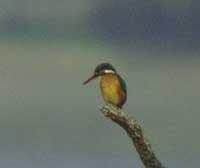
As a known fisherman, and knowing that the key to the problem lies in human evil actions, in some places people have accused him of trout shortage. Even in some fish farms fear this bird, as it can learn to visit these exquisite feeders and even though it barely hurts by eating a few fry, it can frighten and stress the fish. Therefore, in some areas fish farms are covered with nets.
Although they are usually quite solitary, by April they come together in pairs and prepare for the nest. The nest is built on slopes of riverside land and if the environment does not offer this condition they are not conditioned in it. The male and female together for several days open a tunnel between 40 and 100 cm. To drill the floor use the beak and then pull it out with the legs back. The inside of the hole ends in a width of 15 to 20 cm of diameter and, although they do not nest, with the passage of time they accumulate remains of bonefish, scales and others.
The 6-7 eggs placed by the female are white rolls and 23x19 mm. After about 20 days of incubation, the offspring are born and in the nest they spend three or four weeks to complete the plumage and leave the field. They will normally take a second chitazo a year and sometimes a third. The reproduction rate of this species is therefore high, but cold winters seem to cause high mortality in the populations of this species.
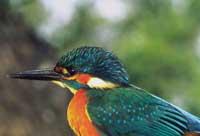
Kingfisher is a widely spread species. In Europe, from southern Sweden to the Mediterranean, and in the distribution map of Euskal Herria, we have since it can appear throughout the territory. In fact it is so, from 1,000 meters to sea level, but it seems that in recent years has suffered a significant setback. Unfortunately, many rivers of the Atlantic slope are still contaminated and those that are quite clean, in most cases, are high courses.
However, the scarcity of land slopes to nest, in addition to being an intense current, makes these streams not the most suitable habitats for our Martin. As far as the Mediterranean side is concerned, we must say that it is also insufficient. Surely, the canalizations, river channels, pollution or short vegetation of recent years have proved very harmful and, although protected, there are still those who kill this treasure.
As we have said, winter is a hard enemy of this animal. In northern Europe, when the rivers freeze they cannot fish, so they are forced to migrate south. That is precisely the reason why, starting in July, the Martin fishermen of the middle and south of Europe are associated to the north and, as we can see in any wet, river or coastal area, this bird is more abundant than it really is. However, unfortunately and as we have said, it is rare.
Species: Alcedo atthis Family: cemented Order: coraciform Class: birds |

Gai honi buruzko eduki gehiago
Elhuyarrek garatutako teknologia




